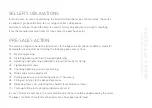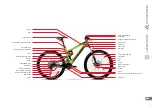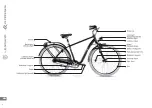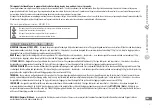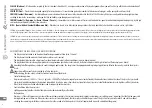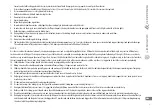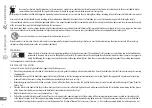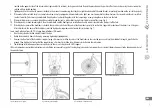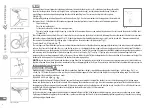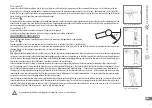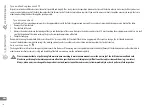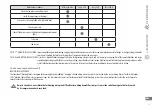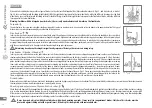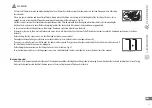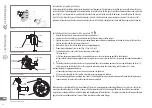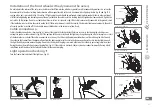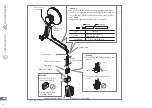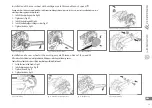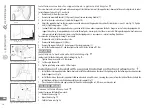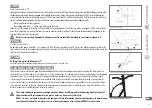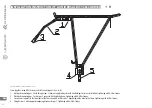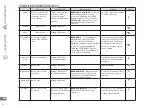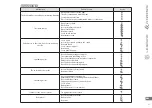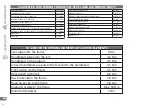
13
EN
WARNING
• 203 mm and 180 mm discs provide higher braking force than 160 mm discs. Before using the brakes make sure that you have good sense of braking
characteristics.
• Please pay special attention and do not insert fingers, during wheel installation or servicing, in the rotating disc of the disc brake. The disc is sharp
enough to cause serious wounds if fingers become trapped in openings of the rotating disc. Fig. 26.
• Clutches and disc increase their temperature during brake operation, thus do not touch them during the ride or immediately after dismounting the
bicycle, otherwise burns may occur. Before attempting to adjust the brake, check if its elements have cooled down appropriately.
• In case of wet weather, braking distance will be longer. Slow down earlier and delicately use the brake.
• If the road surface is wet, the wheels will slide much easier. In case of a wheel slide, the cyclist may fall off the bicycle. In order to avoid this, slow down earlier and use the brake
delicately.
• Before starting the ride, always make sure that front and rear brakes are operational.
• Prevent penetration of oil or grease into the disc or brake clutches, otherwise the brakes may not operate correctly.
• If any grease or oil makes contact with the pads, the pads must be replaced. If any grease or oil makes contact with the disc, the disc must be cleaned. If
this is not done, the breaks may operate improperly.
• Before riding the bicycle make sure that lining thickness is 0,5 mm or more. Fig. 27.
• In case of continuous brake use, resulting vapours may cause a brake blockade. In order to remedy this, release the brake lever for a moment.
Fig. 26. Braking disc
2 mm
0,5 mm
Fig. 27. Lining thickness
Burnout period
• Brake discs have burnout period and at the end of their burnout period their braking force will be gradually increasing. Remember about the increased braking force in case of using
brakes in the burnout period. Identical situation occurs in the case of replacement of brake pads or the disc.


